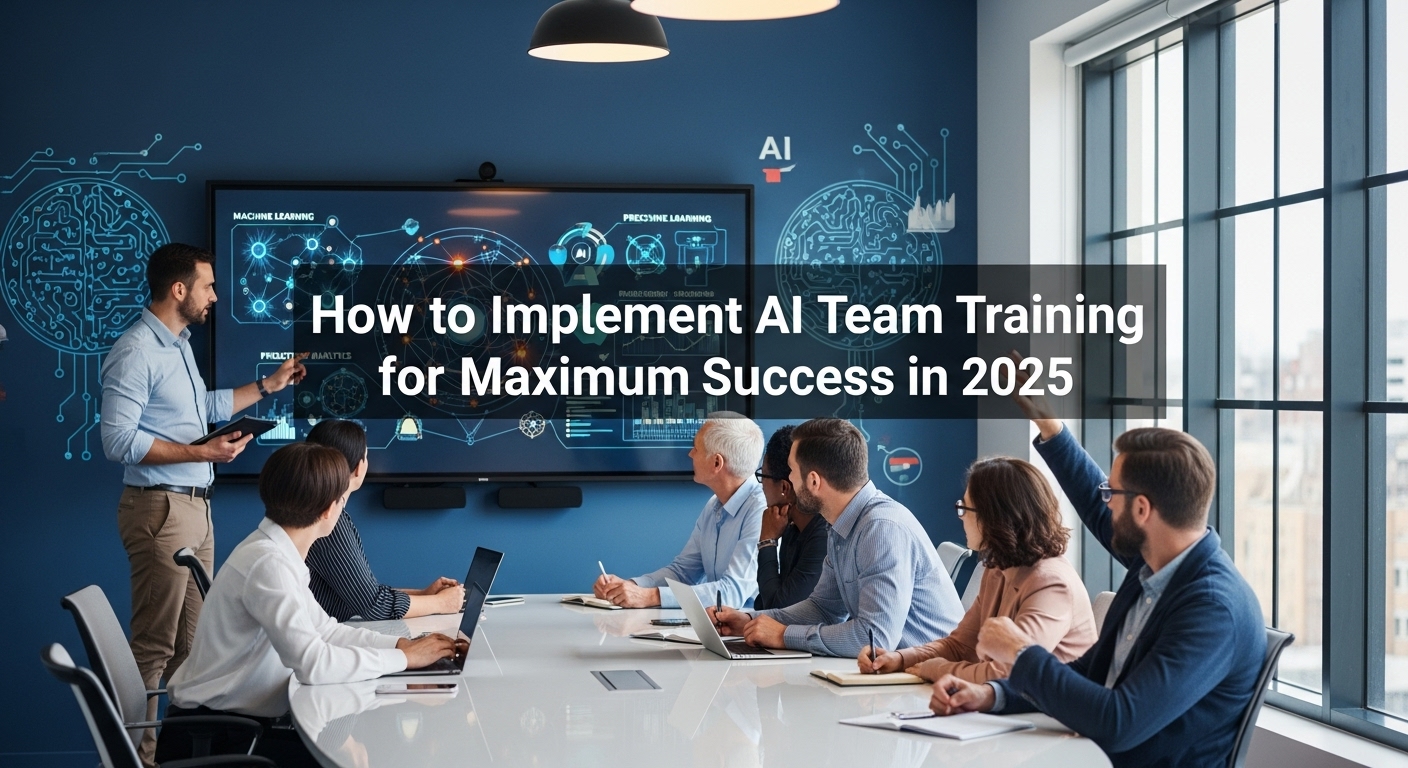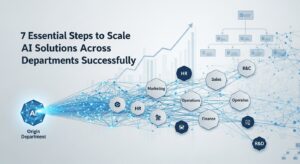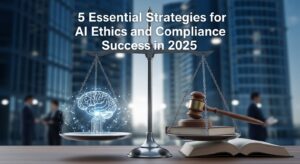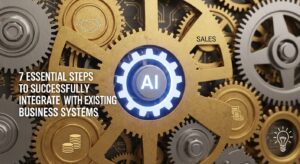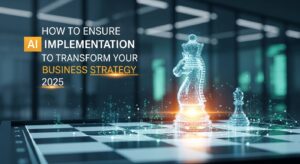The rapid evolution of artificial intelligence is transforming how businesses operate, making AI team training more critical than ever before. Organizations that successfully implement AI training programs report up to 40% increases in productivity and efficiency. But how do you effectively prepare your workforce for this technological revolution?
This comprehensive guide will walk you through proven strategies to train your team on AI technologies, ensuring your organization stays competitive while empowering employees to embrace rather than fear these powerful tools.
Understanding the Current AI Training Landscape
Before diving into implementation strategies, it’s essential to recognize where your team currently stands. Most employees fall into one of three categories regarding AI familiarity:
- AI Beginners: Limited exposure to AI tools beyond basic consumer applications
- AI Curious: Some awareness but lack practical experience with business applications
- AI Adopters: Already using AI tools but may lack systematic knowledge
Understanding these different starting points helps tailor your AI team training approach for maximum effectiveness.
The Business Case for AI Training
Companies investing in comprehensive AI education see remarkable returns. According to recent studies from McKinsey & Company, organizations with structured AI training programs achieve:
- 35% faster project completion rates
- 28% reduction in operational costs
- 42% improvement in employee satisfaction scores
- 50% higher AI adoption rates across departments
Step 1: Assess Your Team’s Current AI Knowledge
The foundation of effective AI team training begins with a thorough assessment of existing capabilities. This evaluation helps create personalized learning paths and identifies knowledge gaps that need immediate attention.
Conducting a Skills Audit
Start by surveying your team using these key questions:
Technical Proficiency Assessment:
- Which AI tools have you used in the past six months?
- Rate your comfort level with machine learning concepts (1-10 scale)
- How confident are you in explaining AI benefits to clients or colleagues?
Application-Specific Questions:
- Have you used AI for data analysis, content creation, or process automation?
- What challenges do you face when considering AI implementation in your role?
- Which AI applications would most benefit your daily work?
Creating Learning Personas
Based on assessment results, group team members into distinct learning personas. This segmentation allows for targeted AI team training that addresses specific needs and learning speeds.
| Persona Type | Characteristics | Training Focus |
|---|---|---|
| Technical Leaders | Strong analytical background, quick learners | Advanced AI concepts, implementation strategies |
| Creative Professionals | Visual learners, application-focused | AI tools for content, design, and ideation |
| Operations Teams | Process-oriented, practical approach | Workflow automation, efficiency tools |
| Management | Strategic thinkers, ROI-focused | AI business impact, change management |
Step 2: Design a Comprehensive AI Training Curriculum
Successful AI team training requires a structured curriculum that balances theoretical understanding with practical application. Your program should address both foundational concepts and role-specific AI implementations.
Core Curriculum Components
Foundation Module (Week 1-2):
- AI fundamentals and terminology
- Machine learning basics without complex mathematics
- Current AI landscape and business applications
- Ethical considerations and responsible AI use
Practical Application Module (Week 3-4):
- Hands-on experience with popular AI tools
- Industry-specific use cases and examples
- Best practices for AI integration
- Common pitfalls and how to avoid them
Tool-Specific Training Tracks
Different roles require proficiency with different AI technologies. Create specialized tracks focusing on:
Content and Marketing Teams:
- AI writing assistants (Jasper, Claude, ChatGPT)
- Visual AI tools (DALL-E, Midjourney)
- Social media automation platforms
Data and Analytics Teams:
- Machine learning platforms (TensorFlow, scikit-learn)
- Automated data analysis tools
- Predictive modeling applications
Customer Service Teams:
- Chatbot development and management
- Sentiment analysis tools
- Automated response systems
Step 3: Implement Interactive Learning Methods
Traditional lecture-style training often fails to engage learners effectively. Modern AI team training should incorporate interactive elements that encourage experimentation and practical application.
Hands-On Workshops
Schedule weekly 2-hour workshops where team members work directly with AI tools. Structure these sessions around real business challenges your organization faces.
Workshop Format:
- Problem Presentation (15 minutes): Present a genuine business challenge
- Tool Introduction (30 minutes): Demonstrate relevant AI solution
- Guided Practice (60 minutes): Teams work on solving the problem
- Results Sharing (15 minutes): Groups present their approaches and outcomes
Peer Learning Programs
Establish mentorship pairs matching AI-experienced employees with beginners. This approach accelerates learning while building internal expertise networks.
Peer Learning Benefits:
- Reduces training costs by leveraging internal knowledge
- Creates sustainable learning communities
- Builds confidence through collaborative problem-solving
- Ensures knowledge retention through teaching others
Project-Based Learning
Assign real-world projects that require AI implementation. This practical approach helps teams understand how AI technologies solve actual business problems rather than abstract concepts.
Sample Project Ideas:
- Automate a repetitive manual process using AI tools
- Develop a customer service chatbot for common inquiries
- Create AI-enhanced marketing content for upcoming campaigns
- Build predictive models for sales forecasting
Step 4: Establish Ongoing Support Systems
AI team training shouldn’t end after initial workshops. Continuous learning support ensures sustained adoption and prevents skill degradation over time.
Internal AI Champions Network
Identify and train 2-3 team members as AI champions who can provide ongoing support and guidance. These champions should:
- Attend advanced AI training programs
- Stay updated on emerging AI technologies
- Provide first-line support for AI-related questions
- Share success stories and best practices across teams
Resource Libraries and Documentation
Create centralized repositories containing:
Reference Materials:
- Quick-start guides for commonly used AI tools
- Video tutorials for complex processes
- Troubleshooting guides for common issues
- Template libraries for various AI applications
Knowledge Sharing Platforms:
- Internal forums for discussing AI implementations
- Regular “Lunch and Learn” sessions featuring team successes
- Monthly newsletters highlighting new AI developments
- Case study documentation of successful AI projects
Continuous Skill Assessment
Implement quarterly assessments to track progress and identify areas needing additional support. Use practical evaluations rather than theoretical tests:
- Have team members demonstrate AI tool proficiency
- Review real projects where AI was successfully implemented
- Assess problem-solving approaches using AI technologies
- Gather feedback on training effectiveness and areas for improvement
Step 5: Measure Success and ROI
Effective AI team training programs require robust measurement systems to demonstrate value and guide future improvements.
Key Performance Indicators
Track both quantitative and qualitative metrics to assess training effectiveness:
Productivity Metrics:
- Time saved through AI automation
- Increased output quality or volume
- Reduction in manual task completion time
- Improved accuracy rates in data-driven decisions
Adoption Metrics:
- Percentage of team members actively using AI tools
- Frequency of AI tool usage across different departments
- Number of successful AI implementations per quarter
- Employee confidence scores in AI tool usage
Business Impact Metrics:
- Cost savings from process automation
- Revenue increases from AI-enhanced capabilities
- Customer satisfaction improvements
- Competitive advantage gained through AI adoption
Regular Feedback Collection
Establish systematic feedback loops to continuously improve your AI team training program:
Monthly Pulse Surveys:
- Training content relevance and quality
- Support system effectiveness
- Additional learning needs identification
- Overall satisfaction with AI implementation progress
Quarterly Review Sessions:
- Comprehensive program evaluation
- Success story documentation
- Challenge identification and resolution planning
- Training curriculum updates based on emerging technologies
Overcoming Common AI Training Challenges
Even well-designed AI team training programs face obstacles. Anticipating and addressing these challenges ensures smoother implementation and higher success rates.
Resistance to Change
Some team members may resist AI adoption due to job security concerns or technology anxiety. Address these concerns through:
- Transparent communication about AI’s role as a productivity enhancer, not replacement
- Success stories from similar organizations or departments
- Gradual implementation allowing comfortable adaptation periods
- Emphasis on skill enhancement rather than job displacement
Technical Complexity
AI technologies can seem overwhelming to non-technical team members. Simplify the learning process by:
- Starting with user-friendly, no-code AI platforms
- Focusing on practical applications rather than technical architecture
- Providing multiple learning formats (visual, auditory, hands-on)
- Breaking complex concepts into digestible components
Resource Constraints
Limited budgets or time allocation can hinder comprehensive training programs. Maximize efficiency through:
- Leveraging free or low-cost AI training resources from Coursera and edX
- Implementing peer-to-peer learning to reduce external training costs
- Starting with pilot programs before full-scale rollouts
- Focusing on high-impact, low-complexity AI applications initially
Future-Proofing Your AI Training Program
The AI landscape evolves rapidly, making program adaptability crucial for long-term success. Build flexibility into your AI team training initiative from the beginning.
Staying Current with AI Developments
Establish systems for monitoring and incorporating new AI technologies:
- Subscribe to reputable AI research publications and industry reports
- Attend AI conferences and webinars regularly
- Maintain relationships with AI vendors and solution providers
- Create innovation time for team members to explore emerging tools
Scalability Planning
Design your training program to accommodate organizational growth:
- Develop standardized training modules that can be easily replicated
- Create train-the-trainer programs for internal scaling
- Establish assessment and certification processes
- Build documentation systems that support program expansion
Conclusion: Transforming Your Organization Through Strategic AI Training
Implementing comprehensive AI team training represents a strategic investment in your organization’s future competitiveness. By following the five essential steps outlined in this guide—assessing current knowledge, designing structured curricula, implementing interactive learning methods, establishing ongoing support, and measuring success—you create the foundation for sustained AI adoption and innovation.
Remember that successful AI training goes beyond tool proficiency. It requires cultural transformation that embraces continuous learning, experimentation, and adaptation to technological change. Organizations that invest in thorough AI team training today position themselves as leaders in tomorrow’s AI-driven marketplace.
The journey toward AI proficiency may seem daunting, but with systematic planning and execution, your team will develop the skills needed to leverage artificial intelligence effectively. Start with small, manageable implementations, celebrate early successes, and gradually expand your AI capabilities across all business functions.
Your investment in AI team training today will pay dividends through increased productivity, enhanced decision-making capabilities, and sustainable competitive advantages in an increasingly AI-driven business environment.

